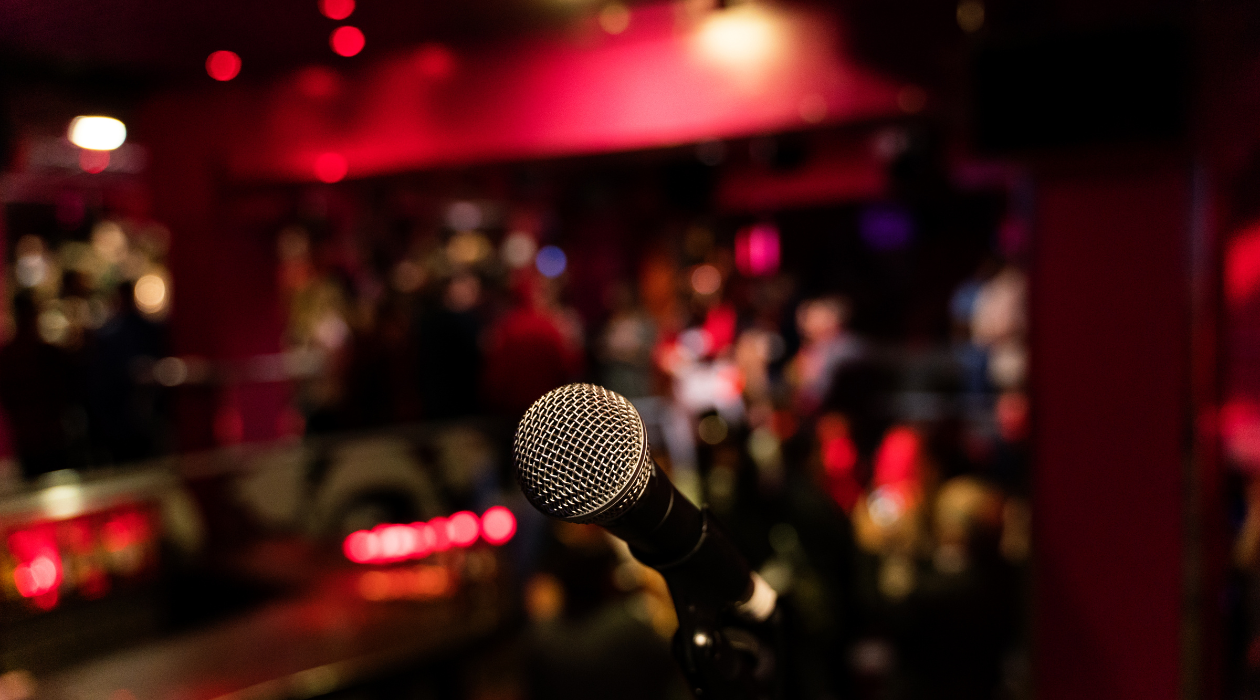My Path From Comedian to Creative

[Header image credit: Canva]
By Marie Maloney
Imagine you’re on stage doing an improv show. Your fellow actors call for a crowd suggestion, anything at all. Someone shouts, “haunted painting!” You and your teammates on stage twist and contort yourselves into an imaginary frame and begin to set the scene. You use your training, instincts, and sheer stupidity to entertain an audience and spin a 22-minute-long series of somewhat interweaving stories. These scenes kind of, sort of, connect back to that haunted painting you became.
That was me 12 years ago, and little did I know, it was training me for a career in advertising.
I moved to Chicago in 2010 to immerse myself in the comedy scene. Since then, I’ve performed improv and sketch comedy at Second City and on iO Harold Teams, and done everything from bad barprov, to writing and performing my own sketch shows, to creating a comedic podcast.
MAKING THE SWITCH
Like many people, during the pandemic I had a reckoning. I had been doing comedy on nights and weekends for 10 years while paying the bills through a series of administrative jobs. I wanted to write and continue to be creative, but also own a home and have decent health insurance.
So, I decided to make a career switch from working the front desk to working on the front lines of advertising. I enrolled in the copywriting track at Chicago Portfolio School, a program that helps people interested in advertising careers create a portfolio with theoretical brand work.
While there, I found my improv background to be more useful than ever. The director that called one of my scenes “absolute dog shit,” every drunk audience member who yelled “sex” as a suggestion, and the shows I performed to four people in a former furniture warehouse on a late Tuesday night –– it all led me to this. Comedy helped prepare me for developing insights and ideas, accepting tough feedback, working under tight deadlines, thinking of impossible-with-budget-constraints campaigns, and writing for brands. Advertising is kind of like improv, and I absolutely love it.
WHAT IS IMPROV, ANYWAY?
Let’s back up and define what I mean by improv. Improv as an art form is a set of guidelines that assist in creating something from nothing and help to set up and move a scene, story, song, or whatever forward.
The basic rules of improv are:
- “Yes, and…”
- Agree on the given set of circumstances
- Be specific
- Be confident
- Don’t be afraid of mistakes
Improv works so well in advertising because it puts you in a positive mindset. You always “yes, and…” ideas and work together with teammates to make more ideas. Improv colors the lens in which you think about a brand, receive feedback, offer suggestions, and collaborate with teammates. You can take the work seriously, but it keeps you from taking yourself too seriously.
DELIGHT IN THE DETAILS
After landing at TMA, I continued to rely on my improv skills in my everyday work. As a copywriter, I would write and brainstorm headlines and point of sale activations with other copywriters, art directors, and designers. Harsh client feedback? That’s a breeze after being heckled while performing in a crowded bar as a Bears game loudly blares in the background. Let’s go back and edit some copy!
Keeping “yes, and…” as my modus operandi has helped me in almost all aspects of being a creative. I find that because I’m actively listening on calls and meetings, I notice more unique details about campaign briefs, assets we’re providing, and even my coworkers personalities and quirks. I feel energized by doing competitive research, finding new human insights, or simply learning new things to help me write better copy. Approaching every day from a positive, “yes, and…” mindset helps in every aspect of creative life.
The improv skills I cultivated in the Chicago comedy scene continue to help keep me stay curious, humble, and excited to tackle new challenges. It’s a fantastic tool for all creatives to try.
Marie Maloney is a copywriter and works remotely.


